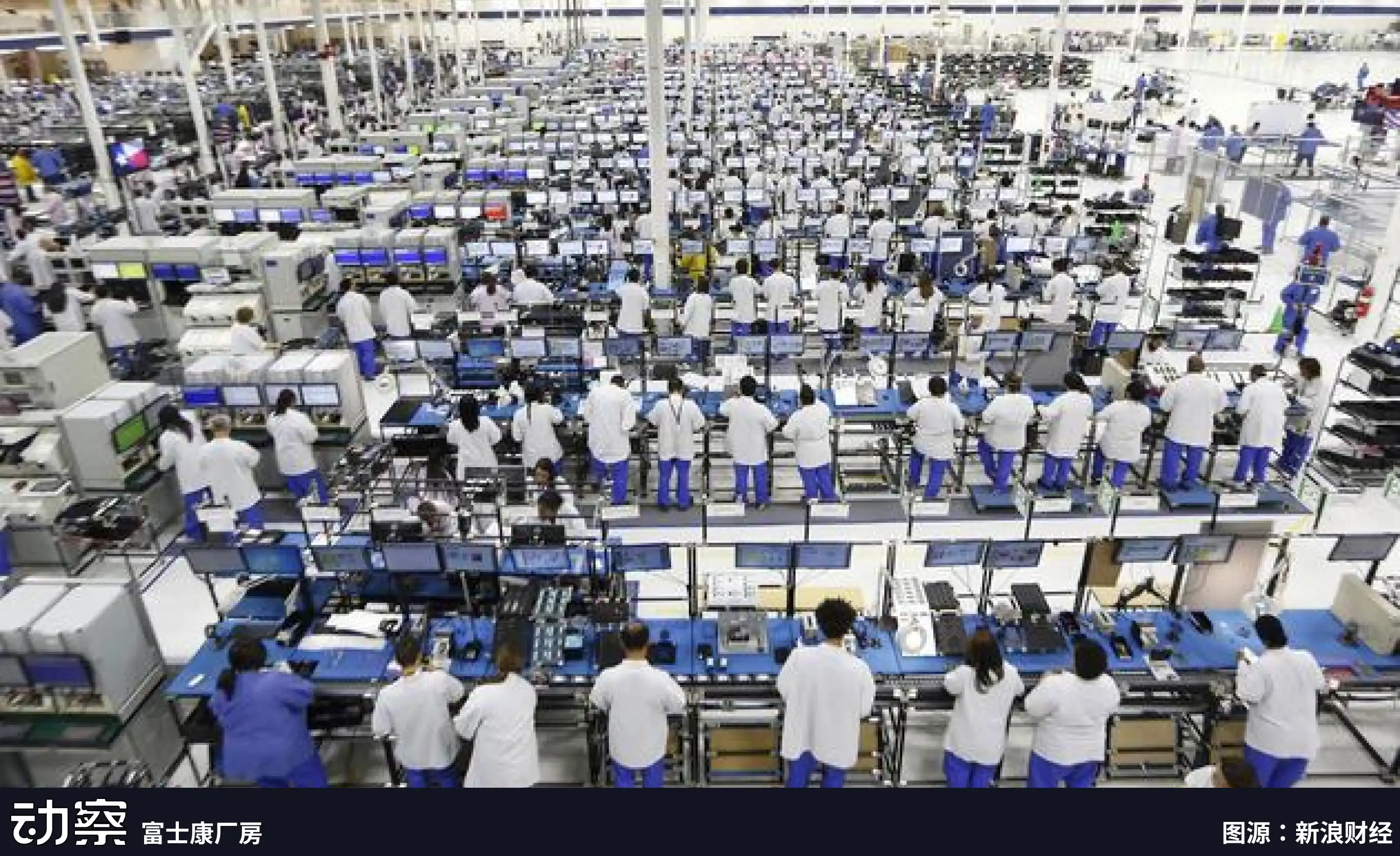
Image source: Modern Times (1936)
Text by | Sleepy.txt
Bridge, a stablecoin issuance platform under Stripe, one of the largest online payment infrastructures in the world, has launched the native stablecoin MetaMask USD (mUSD) for the wallet application MetaMask, which has over 30 million crypto users.
Bridge is responsible for the entire issuance process, from reserve custody and compliance auditing to smart contract deployment, while MetaMask focuses on refining the front-end product interface and user experience.
This collaborative model is one of the most representative trends in the current stablecoin industry, as more and more brands choose to outsource the complex issuance process of stablecoins to professional "factories," just like Apple entrusts the production of iPhones to Foxconn.
Since the birth of the iPhone, Foxconn has almost always undertaken the core production tasks. Today, about 80% of iPhones are assembled in China, with over 70% coming from Foxconn's factories. Foxconn in Zhengzhou once accommodated over 300,000 workers during peak seasons, earning the nickname "iPhone City."

The collaboration between Apple and Foxconn is not a simple outsourcing relationship but a typical case of modern manufacturing division of labor.
Apple concentrates its resources on the user side, such as design, system experience, brand narrative, and sales channels. Manufacturing does not provide it with a differentiated advantage; instead, it implies huge capital expenditures and risks. Therefore, Apple has never owned its factories but has chosen to hand over production to professional partners.
Foxconn has built core capabilities in these "non-core" areas, establishing production lines from scratch, managing raw material procurement, process flows, inventory turnover, and shipping rhythms, continuously compressing manufacturing costs. It has established a complete set of industrial processes in terms of supply chain stability, delivery reliability, and production capacity flexibility. For brand clients, this means a foundational guarantee for frictionless expansion.
The logic of this model is division of labor and collaboration. Apple does not have to bear the fixed burdens of factories and workers, nor does it have to shoulder manufacturing risks during market fluctuations; Foxconn, on the other hand, extracts overall profits from very low unit profits through economies of scale and multi-brand capacity utilization. Brands focus on creativity and consumer reach, while the factories take on industrial efficiency and cost management, creating a win-win situation.
This model has not only changed the smartphone industry. Since the 2010s, computers, televisions, home appliances, and even automobiles have gradually moved towards an outsourcing model. Manufacturers like Foxconn, Quanta, Wistron, and Jabil have become key nodes in the global manufacturing restructuring. Manufacturing has been modularized and packaged, becoming a capability that can be scaled and sold externally.
Years later, this logic began to be transplanted into a seemingly unrelated field: stablecoins.
On the surface, issuing a stablecoin only requires minting on-chain. However, to truly make it operational, the work involved is far more complex than outsiders imagine. Compliance frameworks, bank custody, smart contract deployment, security audits, multi-chain compatibility, account system integration, KYC module integration—completing these steps requires long-term investment in financial strength and engineering capabilities.
We previously detailed this cost structure in "How Much Does It Cost to Issue a Stablecoin?": If an issuing institution starts from scratch, the initial investment often reaches the million-dollar level, mostly consisting of non-compressible fixed expenditures. After going live, annual operating costs can even reach tens of millions, covering various modules such as legal, auditing, operations, account security, and reserve management.
Now, some companies are beginning to package these complex processes into standardized services, providing plug-and-play solutions to banks, payment institutions, and brands. They may not necessarily appear in the spotlight, but behind a stablecoin issuance, their shadows are often visible.
In the world of stablecoins, "Foxconns" are also beginning to emerge.
The "Foxconns" of the Stablecoin World
In the past, wanting to issue a stablecoin almost meant having to play three roles simultaneously: financial institution, technology company, and compliance team. Project parties needed to negotiate with custodial banks, build cross-chain contract systems, complete compliance audits, and even handle licensing issues in different jurisdictions separately. For most companies, such a threshold is too high.
The emergence of the "factory" model is precisely to solve this problem. The so-called "stablecoin factory" refers to institutions that specialize in providing stablecoin issuance, management, and operational services for other companies. They are not responsible for creating the final user-facing brand but provide a complete set of infrastructure needed behind the scenes.
These companies are responsible for building a complete set of infrastructure from front-end wallets and KYC modules to back-end smart contracts, custody, and auditing. Clients only need to specify which type of coin they want to issue and in which markets to launch; other steps can be handed over to the factory. Paxos played such a role when collaborating with PayPal to issue PYUSD: it managed the dollar reserves, handled on-chain issuance, and completed compliance connections, while PayPal only needed to display the "stablecoin" option in its product interface.
The core value of this model is reflected in three aspects.
First is cost reduction. If a financial institution were to build a stablecoin system from scratch, the initial investment could easily exceed a million dollars. Compliance licensing, technology development, security auditing, and bank cooperation all require separate investments. Factories can compress the marginal cost for individual clients to far below that of building in-house by standardizing the processes.
Second is time reduction. The launch cycle for traditional financial products often takes "years," while a stablecoin project following a fully self-developed path could take 12–18 months to materialize. The factory model allows clients to launch products within a few months. The co-founder of Stably has publicly stated that their API integration model can enable a company to complete the launch of a white-label stablecoin in a matter of weeks.
Third is risk transfer. The biggest challenge for stablecoins lies not in technology but in compliance and reserve management. The Office of the Comptroller of the Currency (OCC) and the New York State Department of Financial Services (NYDFS) have very strict regulatory requirements for custody and reserves. For most companies looking to test the waters, bearing all compliance responsibilities is unrealistic. Paxos has been able to secure major clients like PayPal and Nubank precisely because it holds a New York state trust license, allowing it to legally manage dollar reserves and assume disclosure obligations to regulators.
Therefore, the emergence of stablecoin factories has, to some extent, changed the industry's entry threshold. The high upfront investments that only a few giants could originally afford can now be split, packaged, and sold to more financial or payment institutions with demand.
Paxos: Turning Processes into Products, Making Compliance a Business
Paxos set its business direction early on. It does not emphasize branding or pursue market share but builds capabilities around one thing: turning the issuance of stablecoins into a standardized process that others can choose to purchase.
The story begins in New York. In 2015, the New York State Department of Financial Services (NYDFS) opened digital asset licenses, and Paxos became one of the first licensed limited-purpose trust companies. That license is not just symbolic; it means Paxos can manage client funds, operate blockchain networks, and execute asset settlements. Few companies in the U.S. can obtain such qualifications.
In 2018, Paxos launched the USDP stablecoin, placing the entire process under regulatory oversight: reserves held in banks, monthly audit disclosures, and minting and redemption mechanisms written on-chain. Few have learned from this approach because compliance costs are high and it cannot be executed quickly. However, it did create a clear and controllable structure, breaking down the birth process of a stablecoin into several standardizable modules.
Later, Paxos did not focus on promoting its own coin but packaged this set of modules into services for others to use.
Two of its most representative clients are Binance and PayPal.
BUSD is the stablecoin service Paxos provides for Binance. Binance controls the brand and traffic, while Paxos assumes the responsibilities of issuance, custody, and compliance. This model operated for several years until 2023, when the NYDFS required Paxos to stop new minting due to insufficient anti-money laundering reviews. After this incident, the outside world began to notice that BUSD was issued by Paxos behind the scenes.
A few months later, PayPal launched PYUSD, with the issuer still listed as Paxos Trust Company. PayPal has users and a network but lacks regulatory qualifications and does not intend to build its own. Through Paxos, PYUSD can be launched legally and compliantly, entering the U.S. market. This is a representative demonstration of Paxos's "factory" capabilities.

This model is also being replicated overseas.
Paxos obtained a major payment institution license from the Monetary Authority of Singapore (MAS) and based on this, issued the stablecoin USDG. This is Paxos's first complete process outside the U.S. It also established Paxos International in Abu Dhabi, focusing on overseas business, launching a yield-bearing dollar stablecoin USDL using local licenses to avoid U.S. regulations.
The purpose of this multi-jurisdictional structure is straightforward: different clients and different markets require different compliant and feasible issuance paths.
Paxos has not stopped issuing. In 2024, it launched a stablecoin payment platform, beginning to undertake enterprise collection and settlement services, and participated in building the Global Dollar Network, hoping to connect stablecoins from different brands and systems to facilitate clearing. It aims to provide a more complete backend infrastructure.
However, the closer it gets to regulation, the easier it is to be scrutinized by regulators. The NYDFS has previously pointed out its insufficient anti-money laundering due diligence in the BUSD project. Paxos was fined and required to submit rectifications. While this is not a fatal blow, it indicates that Paxos's path is destined to be not lightweight and lacks ambiguous space. It can only continuously strengthen compliance and clarify boundaries. It turns every regulatory requirement and every security step into part of the product process. When others come to use it, they only need to attach their brand to issue stablecoins. The rest is handled by Paxos. This is its positioning and a way of doing business that deeply binds technology and regulation.
Bridge: A Heavyweight Factory Brought by Stripe
The addition of Bridge has introduced a true giant into the stablecoin factory arena.
It was acquired by Stripe in February 2025. Stripe is one of the largest online payment infrastructures in the world, processing billions of transactions daily and serving millions of merchants. Compliance, risk control, and global operations—these paths that Stripe has already navigated are now being transplanted onto the blockchain through Bridge.

Bridge's positioning is straightforward: it provides complete stablecoin issuance capabilities for enterprises and financial institutions. It is not merely a technology outsourcing service; rather, it modularizes the mature segments of the traditional payment industry and packages them into standardized services. Reserve custody, compliance auditing, and contract deployment are all managed by Bridge, allowing clients to simply call an interface to integrate stablecoin functionality into their front-end products.
The collaboration with MetaMask exemplifies this point. As one of the largest Web3 wallets globally, it has over 30 million users but lacks the qualifications for financial licensing and reserve management. Through Bridge, MetaMask can launch mUSD within a few months without spending years building a compliance and financial system.
The business model chosen by Bridge is platform-based. It is not tailored for a single client but aims to build a standardized issuance platform. The logic aligns with Stripe's approach to payments, lowering the entry barrier through APIs and allowing clients to focus on their core business. Just as countless e-commerce platforms and applications integrated credit card payments in the past, companies can now issue stablecoins in a similar manner.
Bridge's advantages stem from its parent company. Stripe has established a compliance cooperation network globally, facilitating Bridge's entry into new markets. Additionally, Stripe's built-in merchant network constitutes a natural pool of potential clients. For those enterprises looking to explore stablecoin business but lacking on-chain technology or financial qualifications, Bridge offers a ready-made solution.
However, limitations do exist. As a subsidiary of a traditional payment company, Bridge may be more conservative than crypto-native enterprises, and its iteration speed may not be fast enough. In the crypto community, Stripe's brand influence is also not as strong as in the mainstream business world.
Bridge's market positioning leans more towards traditional finance and corporate clients. MetaMask's choice underscores this point; it needs a trustworthy financial partner, not just a technology supplier.
The entry of Bridge signifies that the stablecoin factory business is gaining attention from traditional finance. As more players with similar backgrounds join, competition in this space will intensify, but it will also drive the industry towards maturity and standardization.
For the full article, please visit the 【Dongcha Beating】 WeChat public account
免责声明:本文章仅代表作者个人观点,不代表本平台的立场和观点。本文章仅供信息分享,不构成对任何人的任何投资建议。用户与作者之间的任何争议,与本平台无关。如网页中刊载的文章或图片涉及侵权,请提供相关的权利证明和身份证明发送邮件到support@aicoin.com,本平台相关工作人员将会进行核查。




